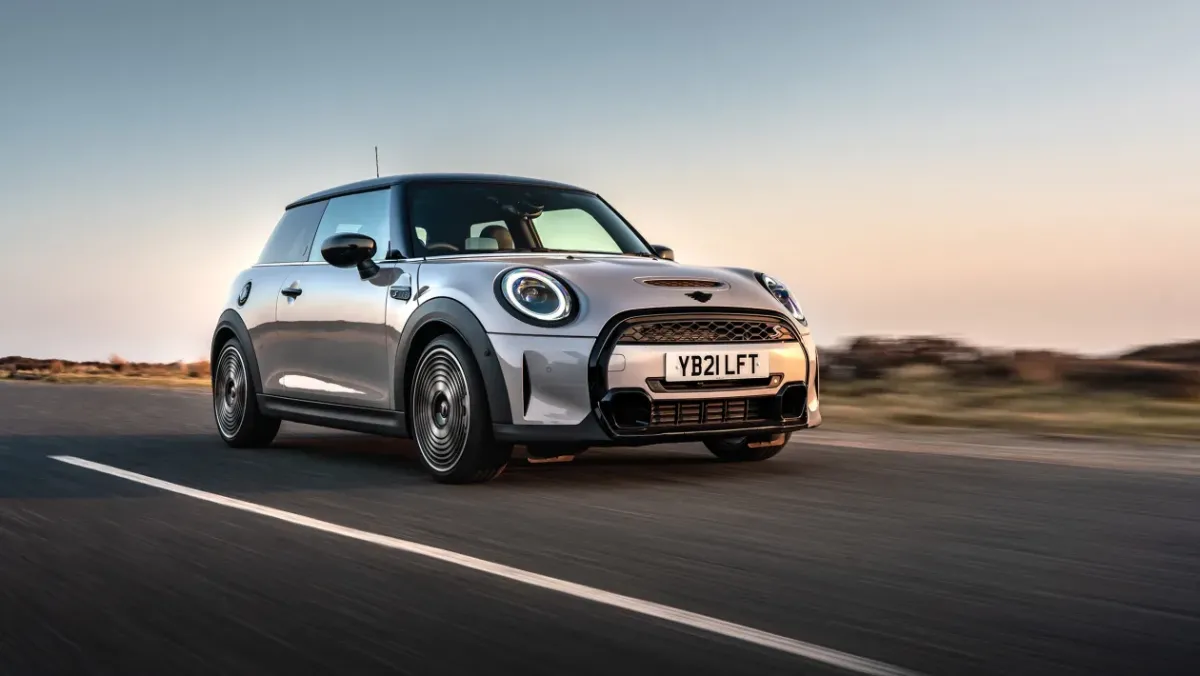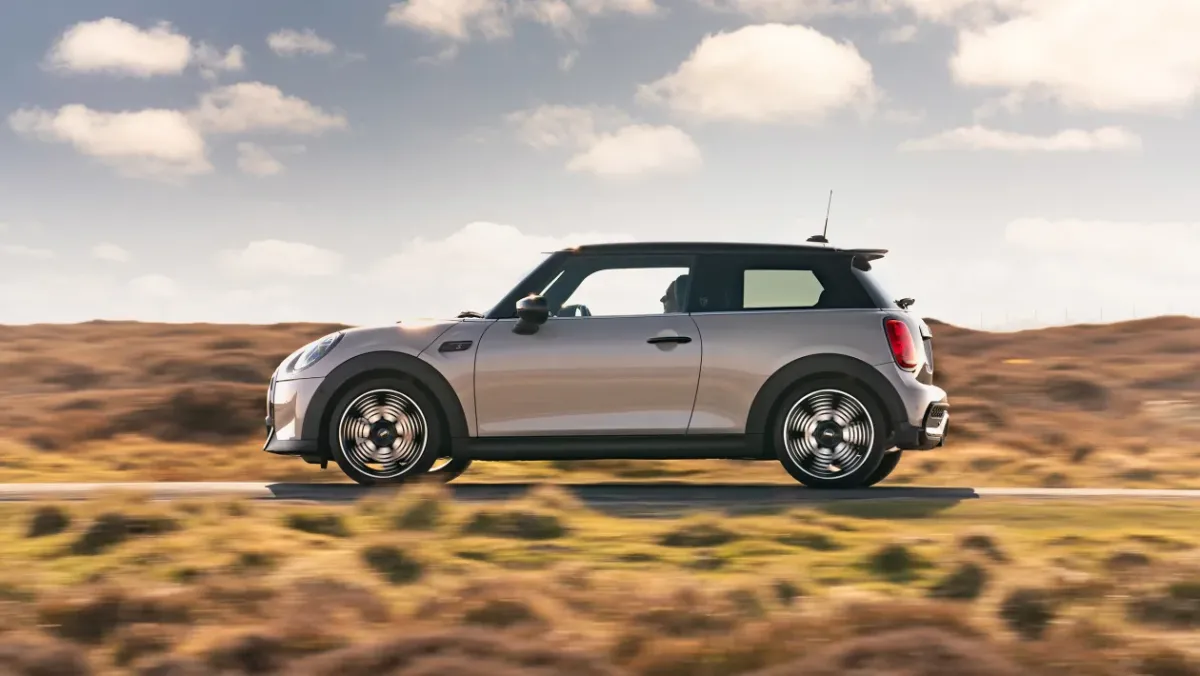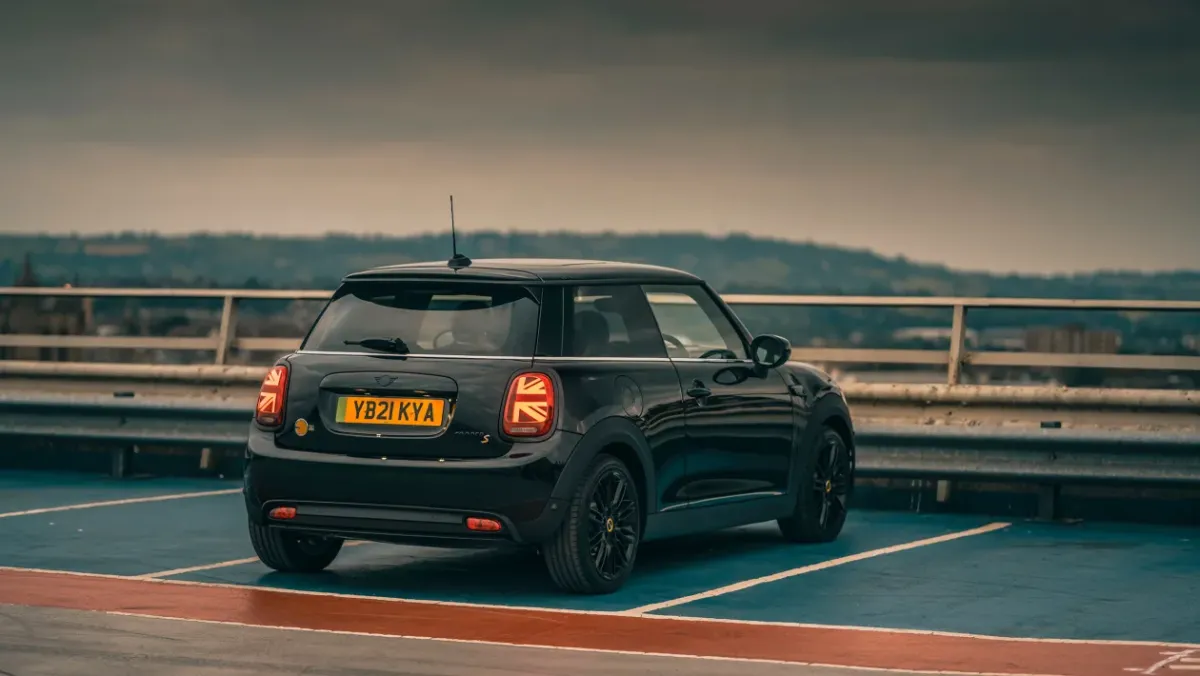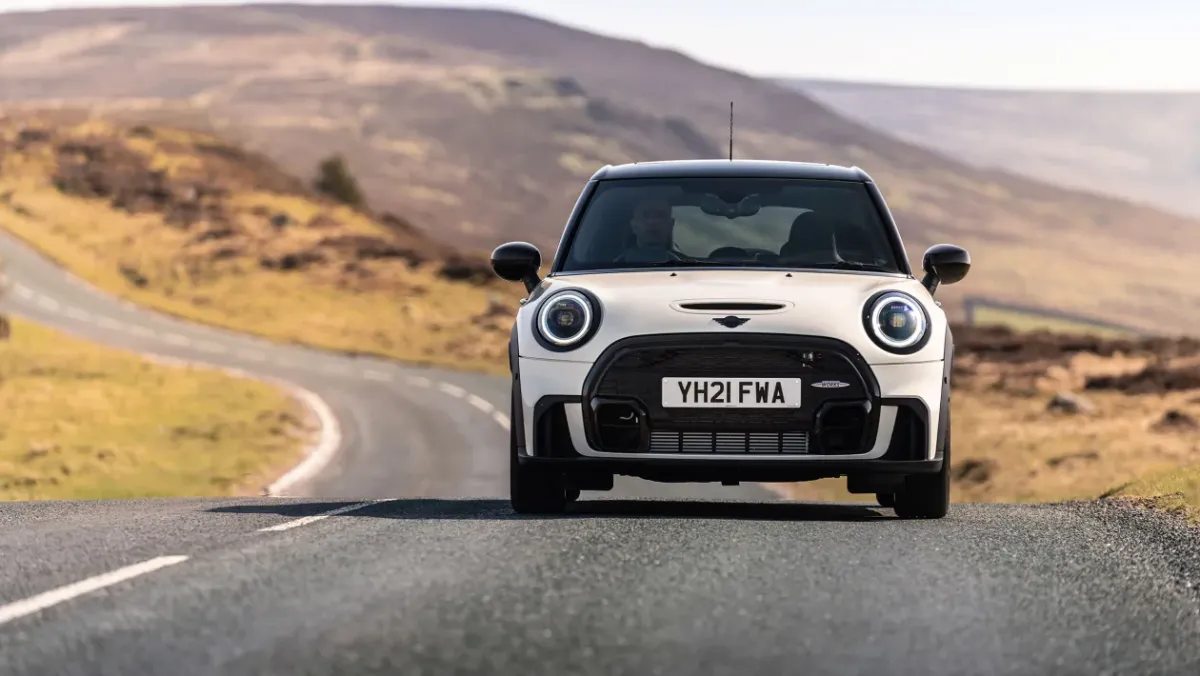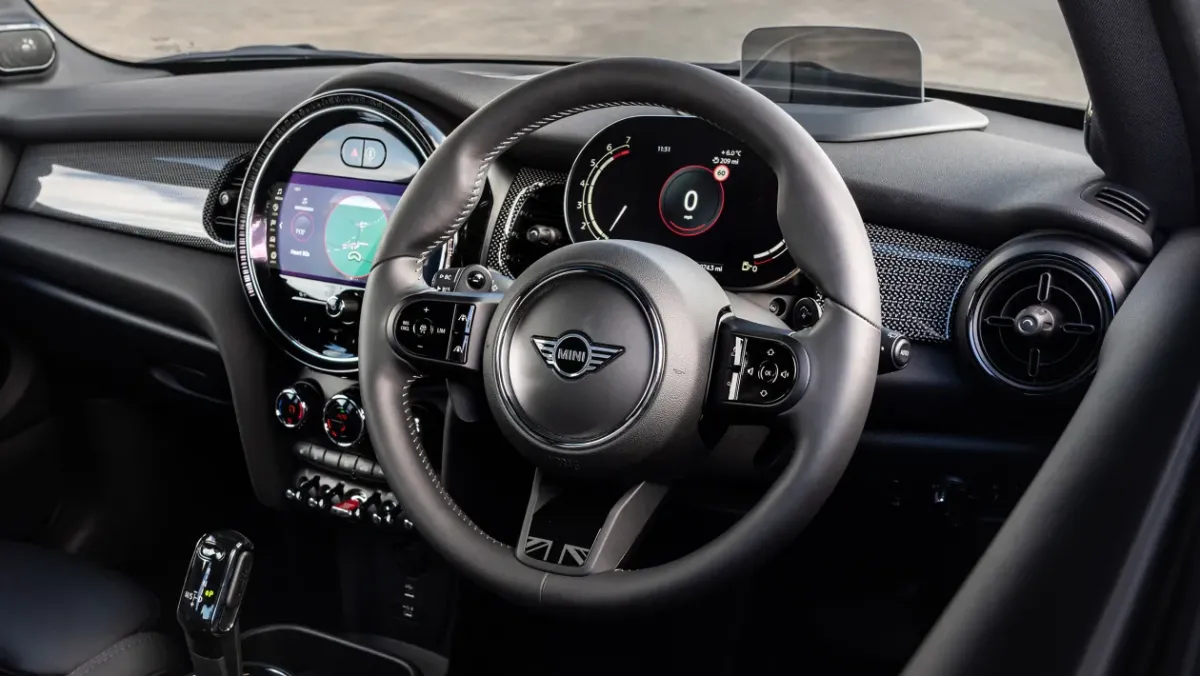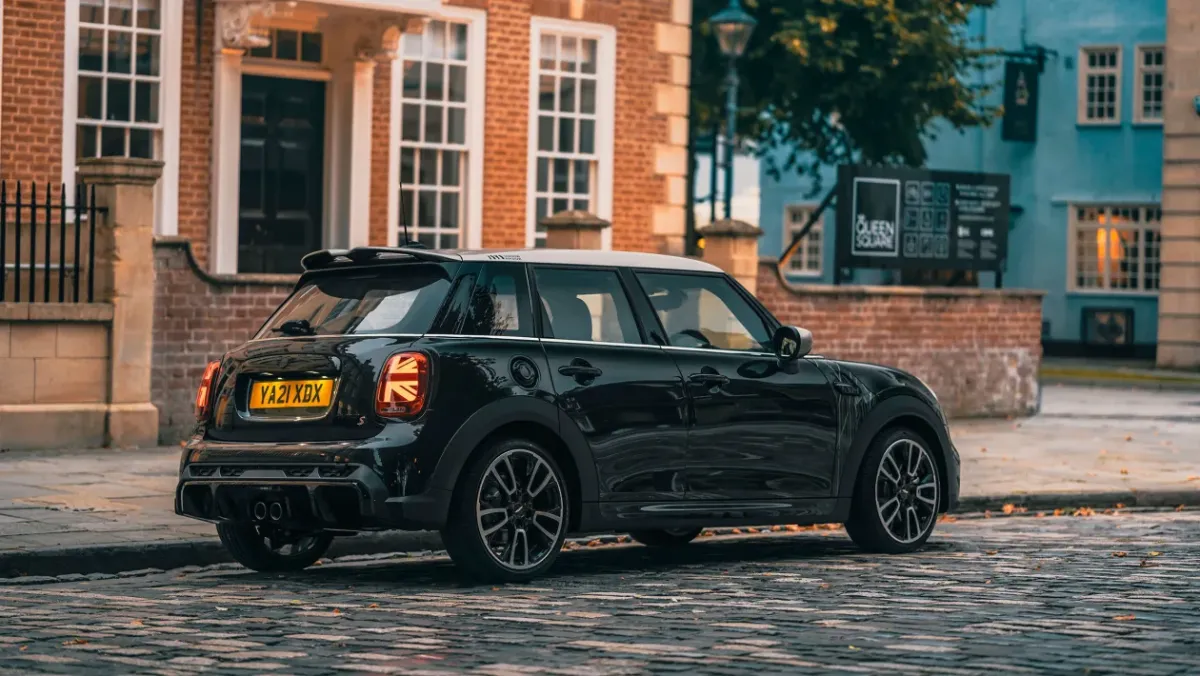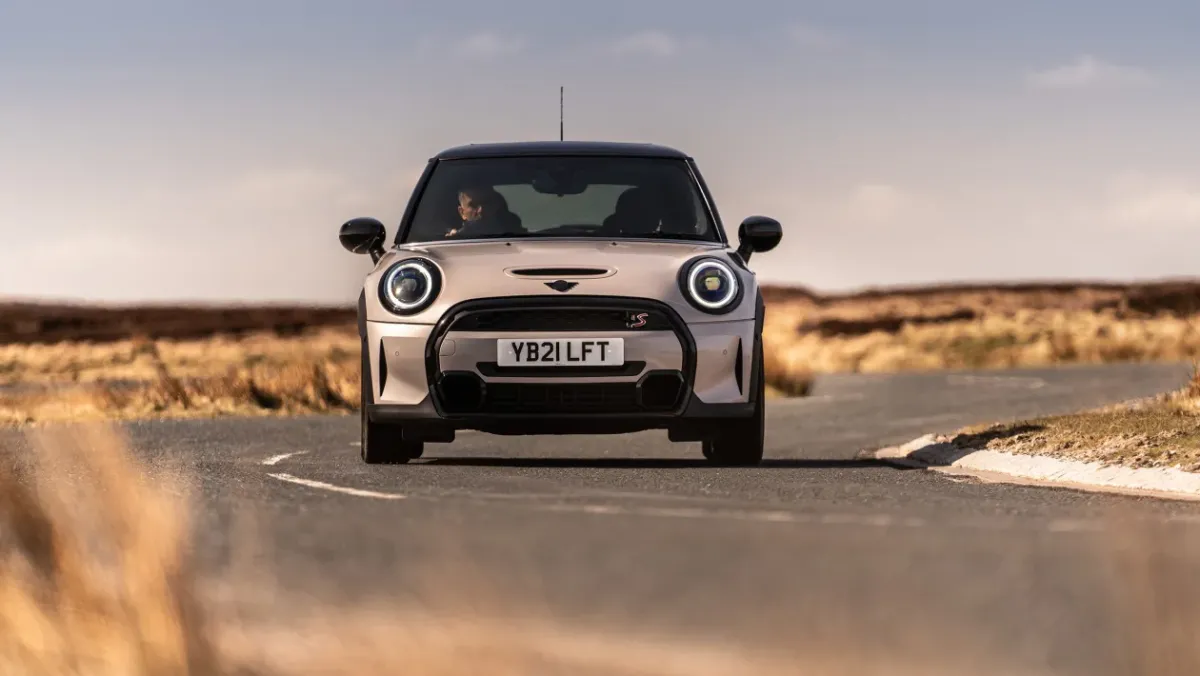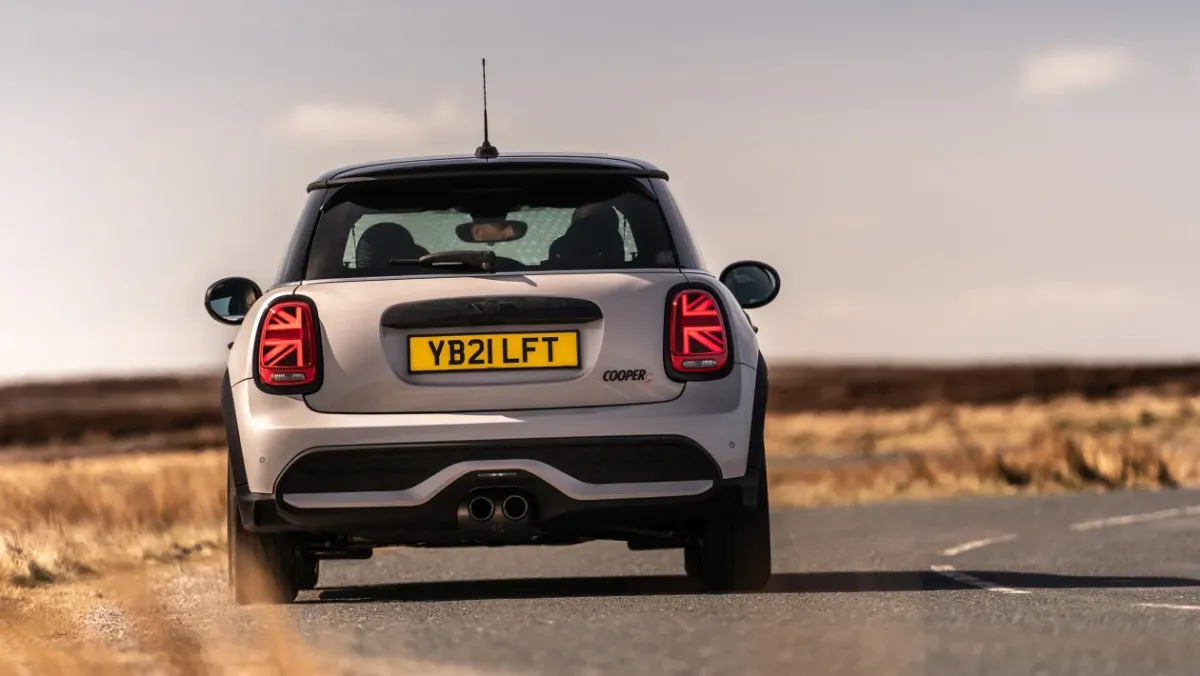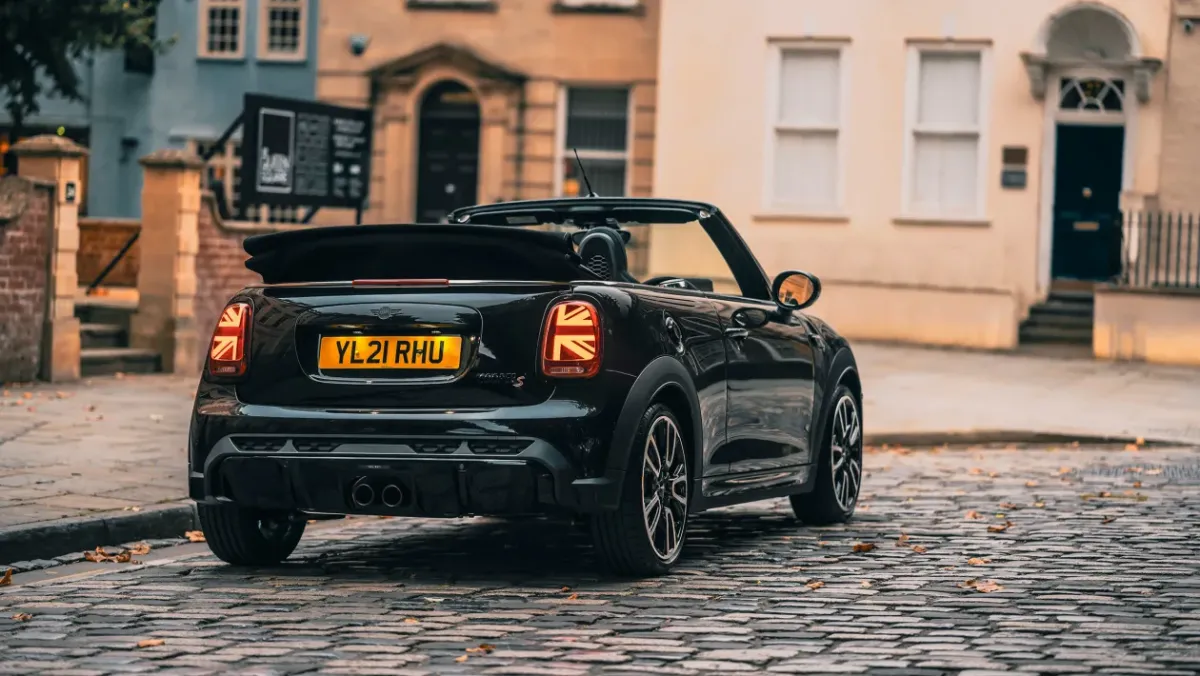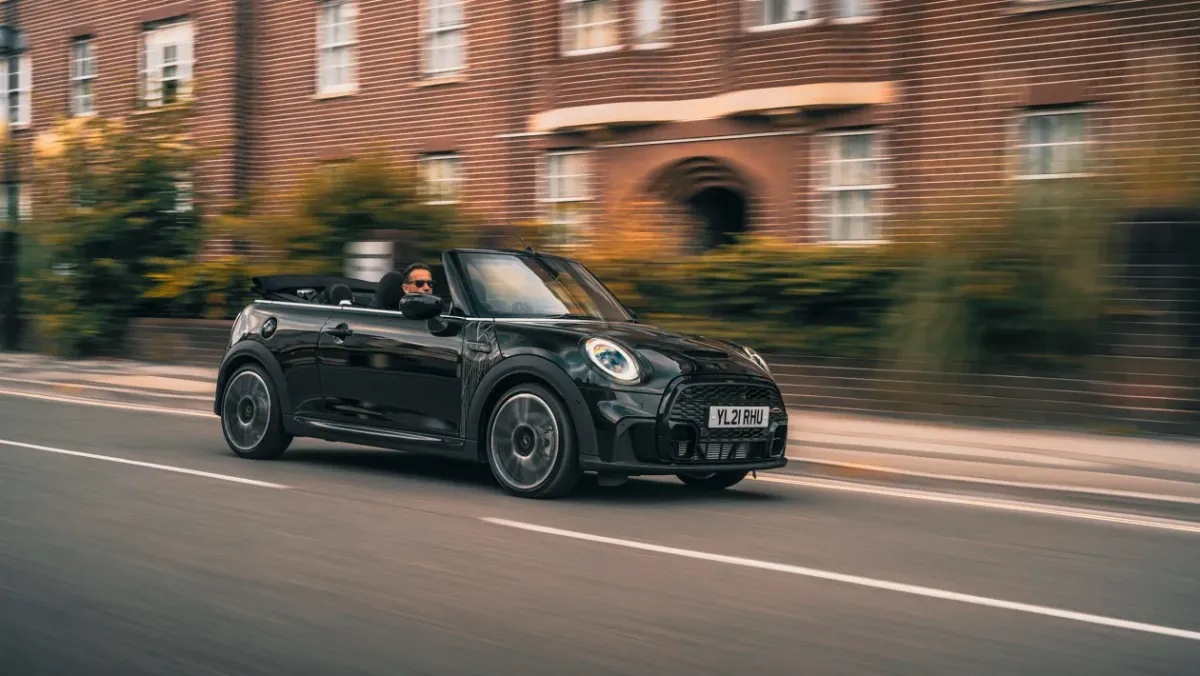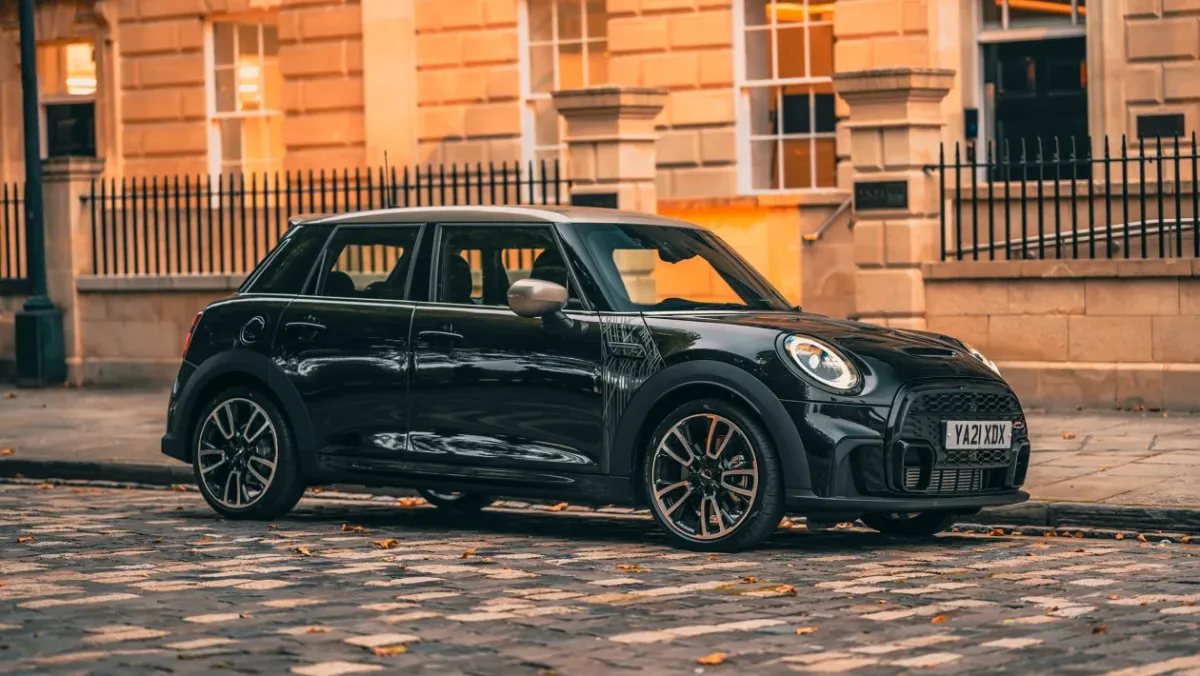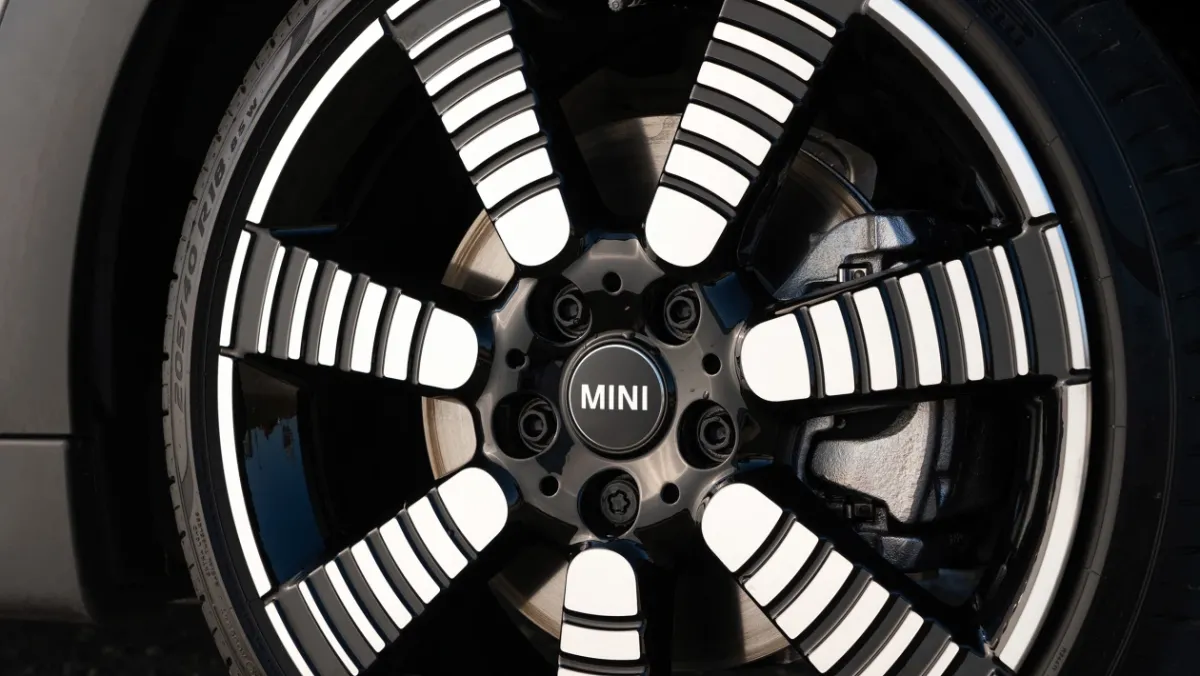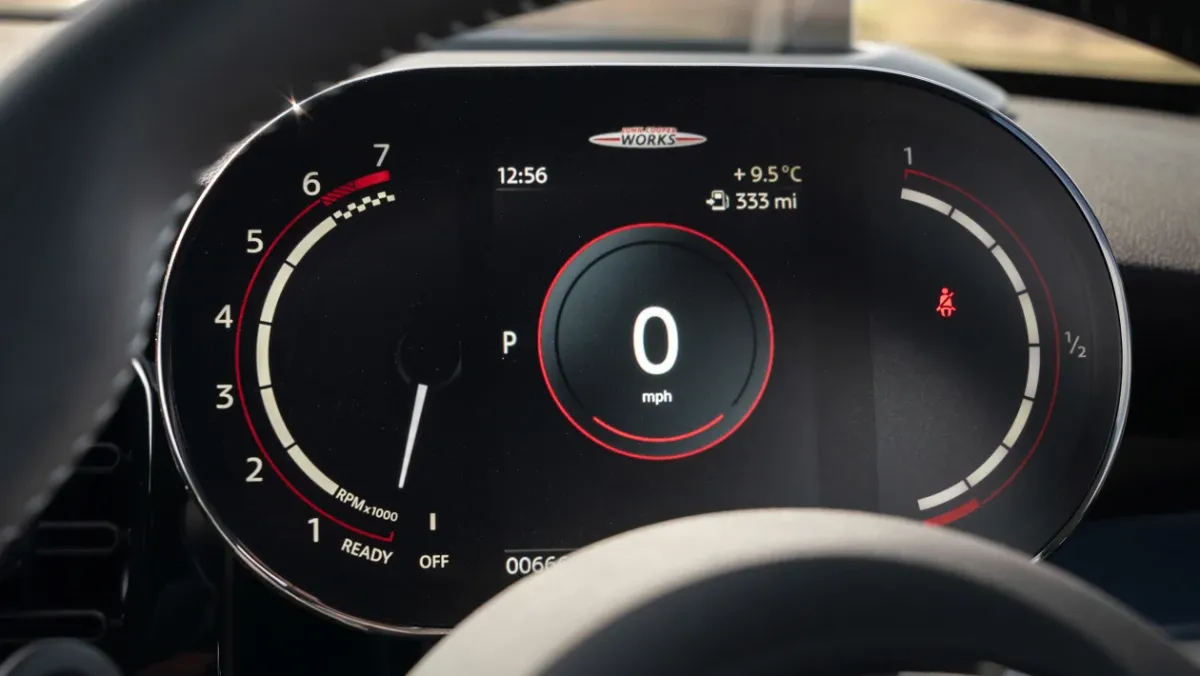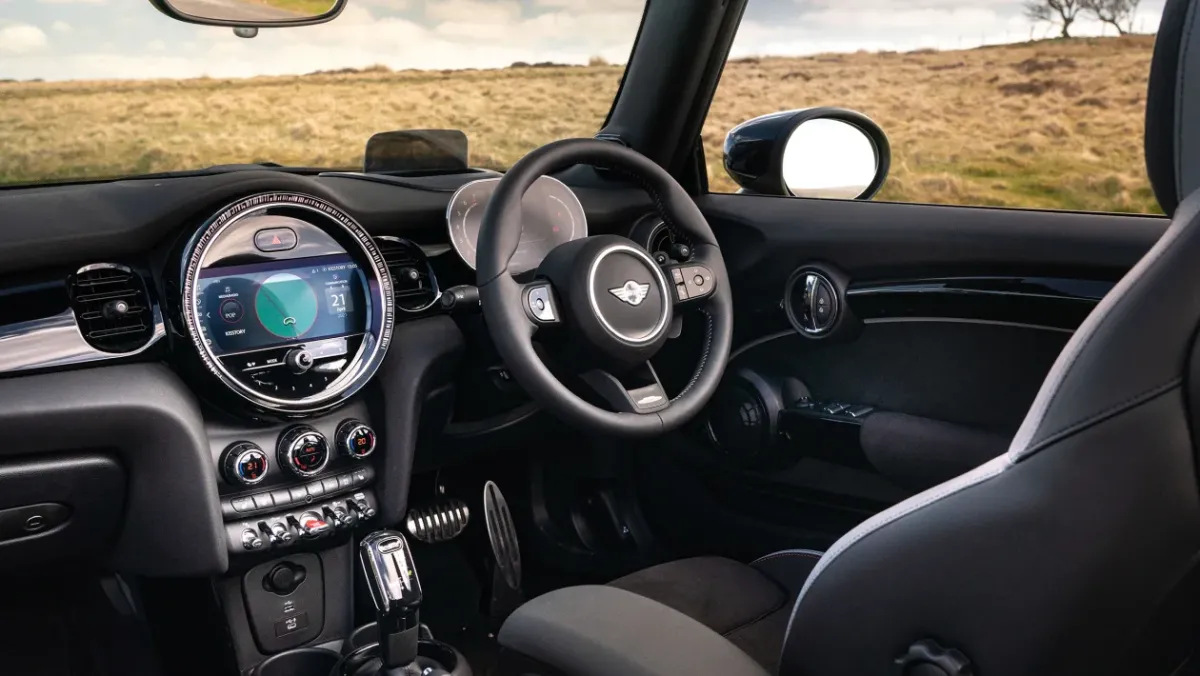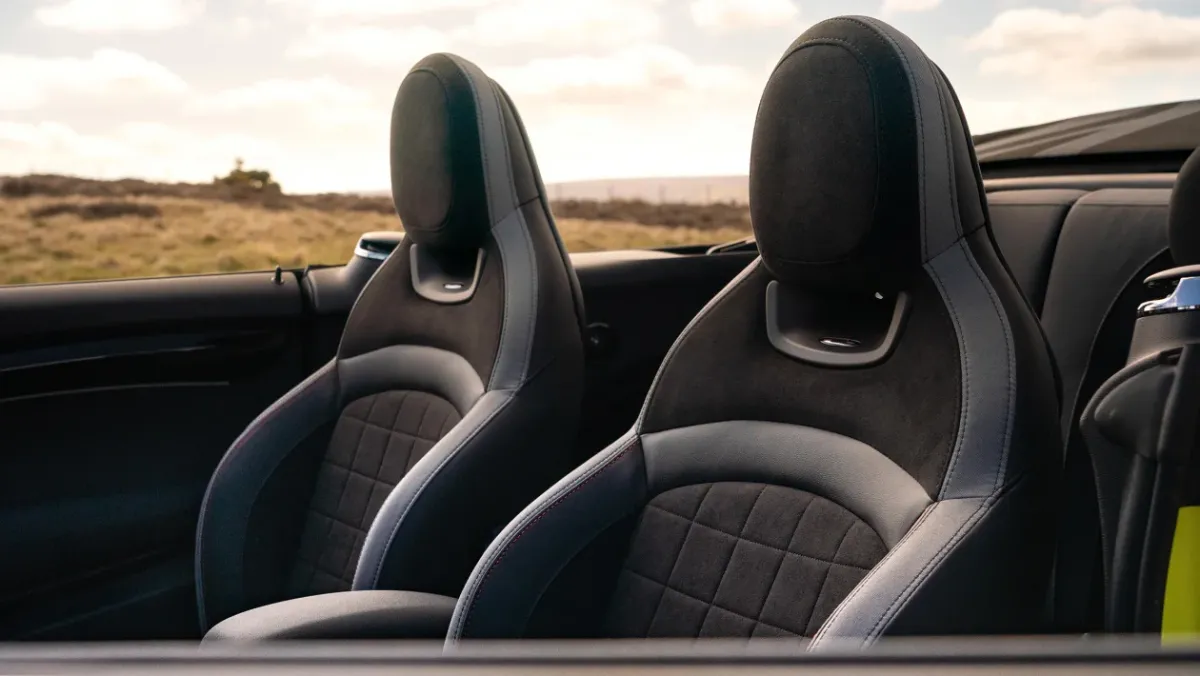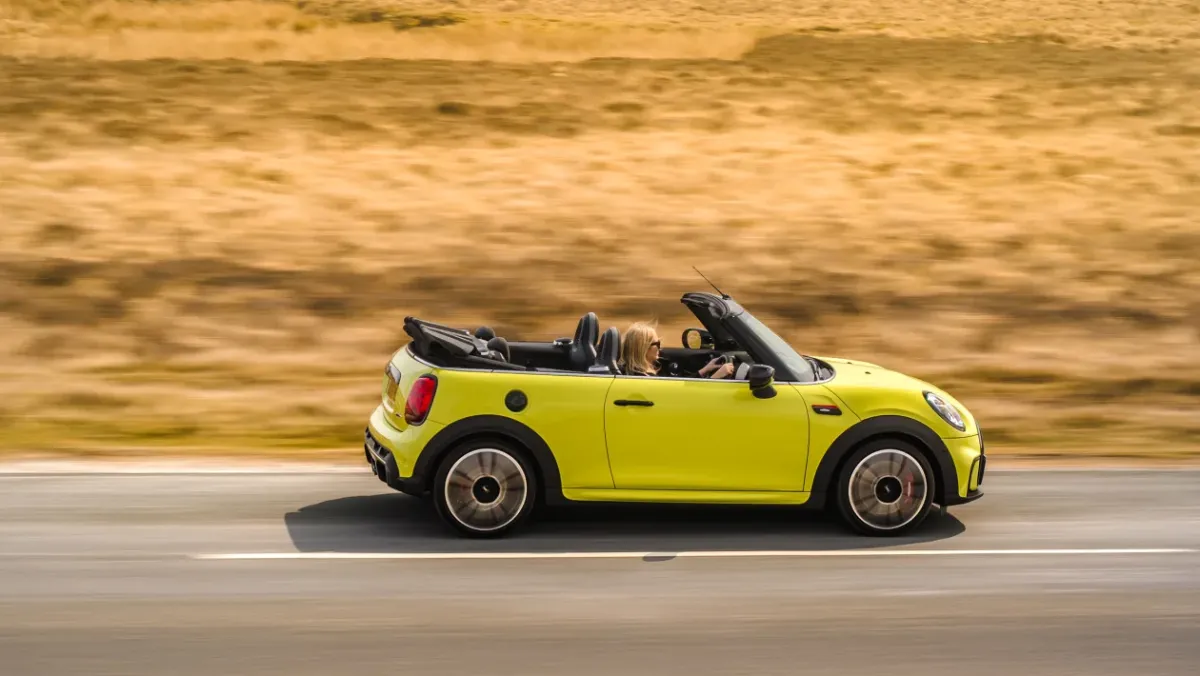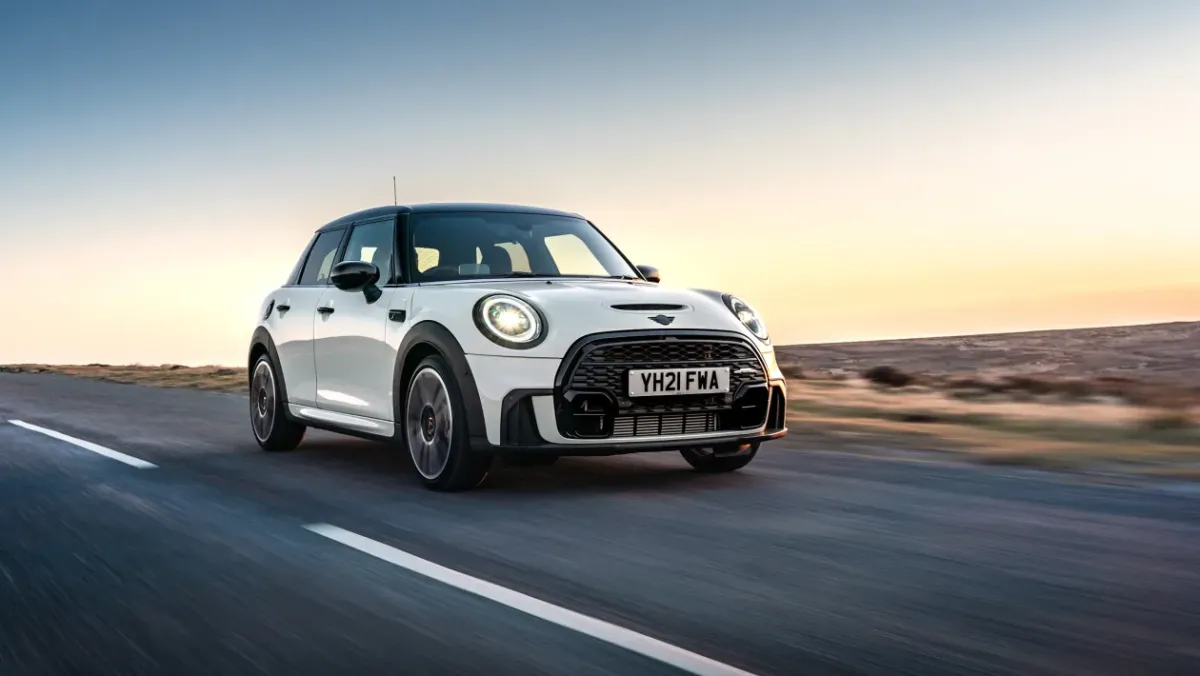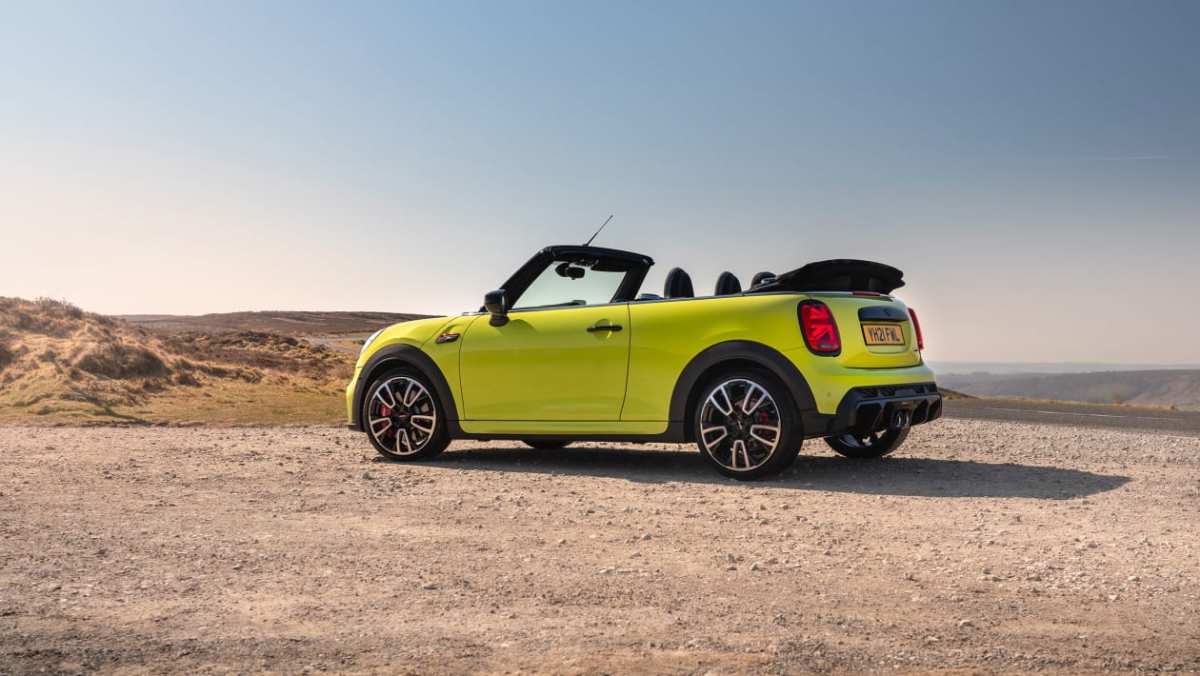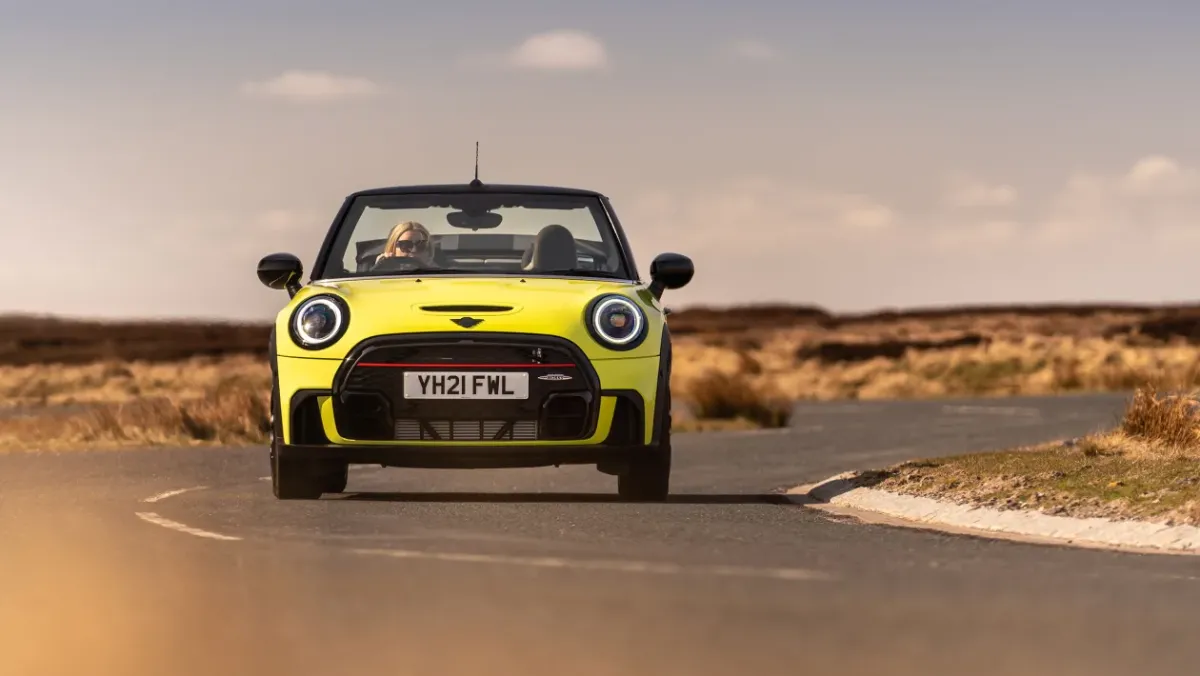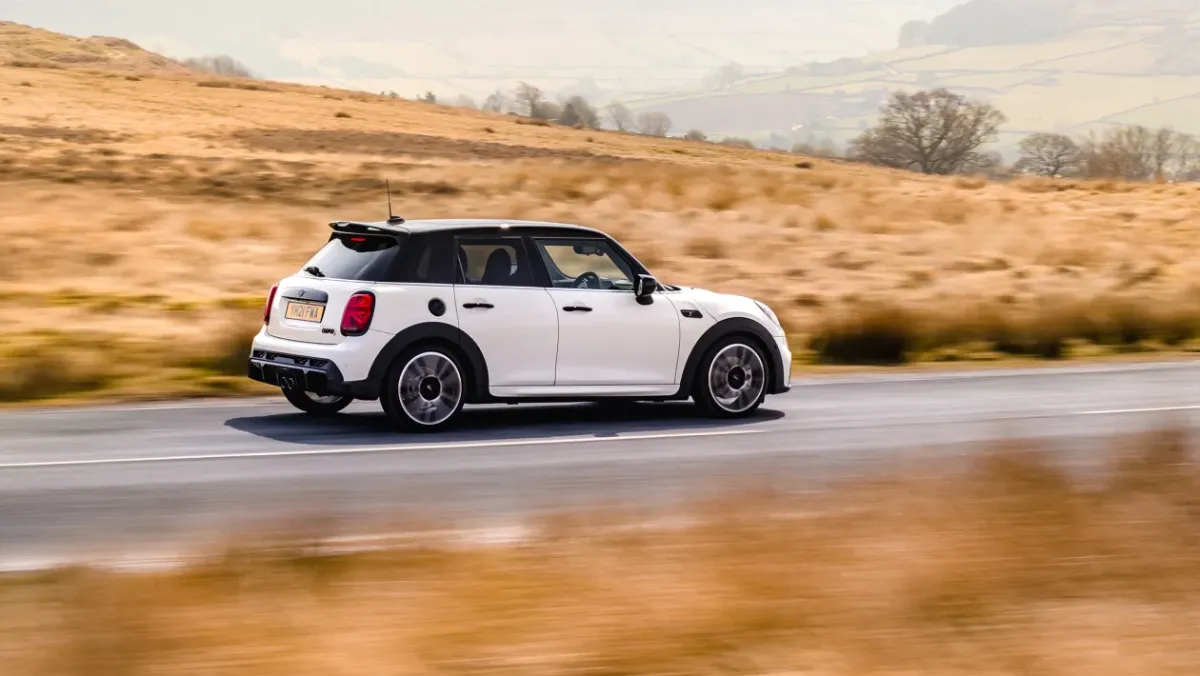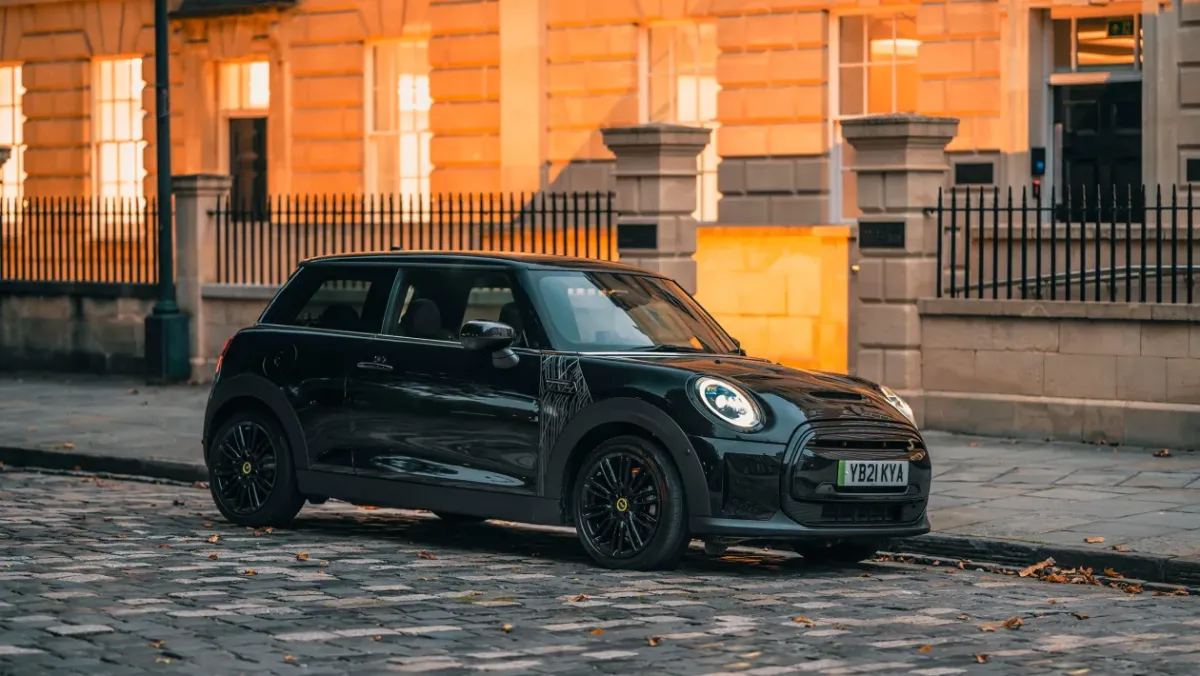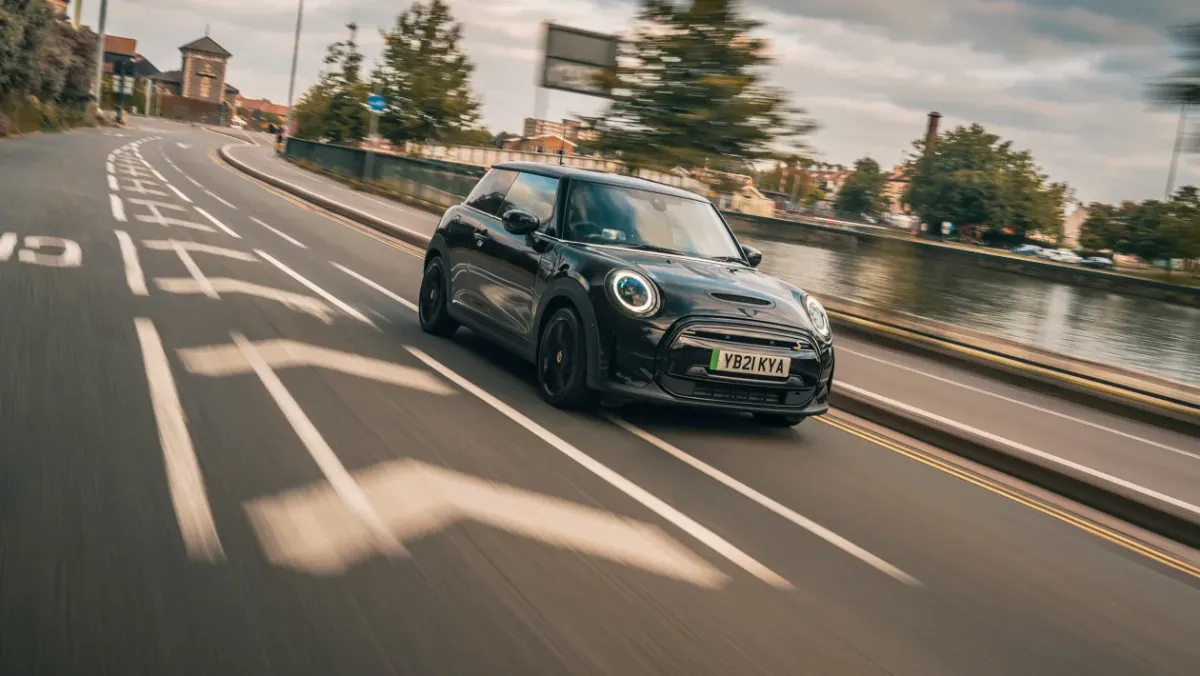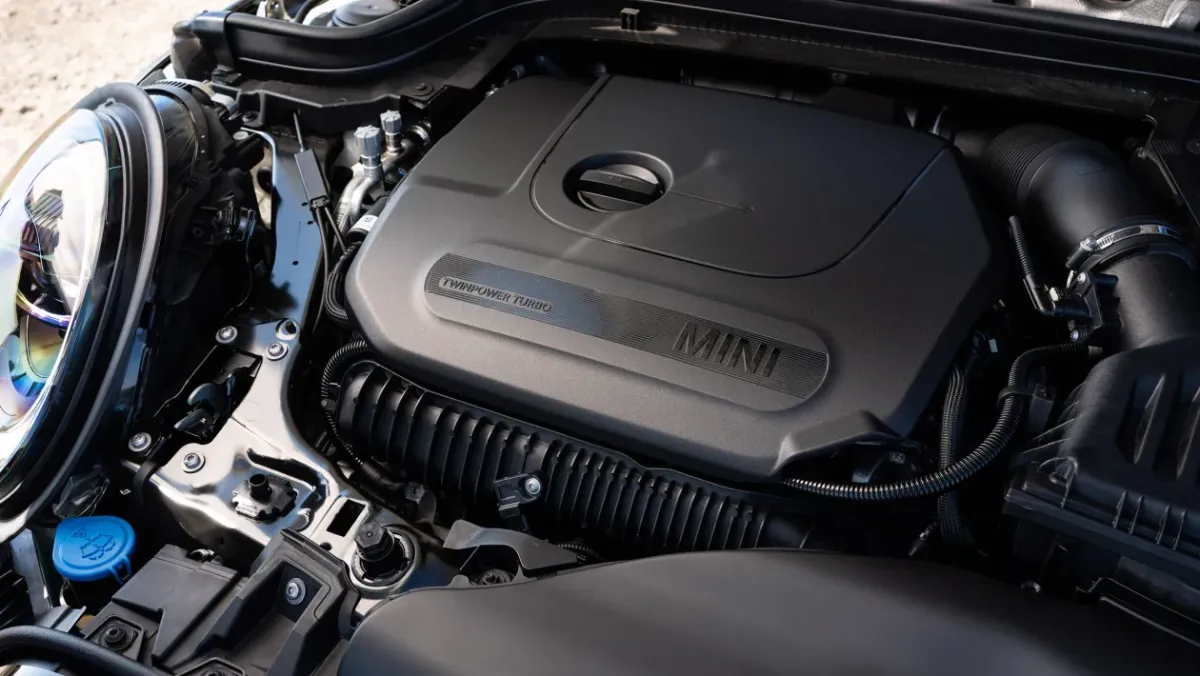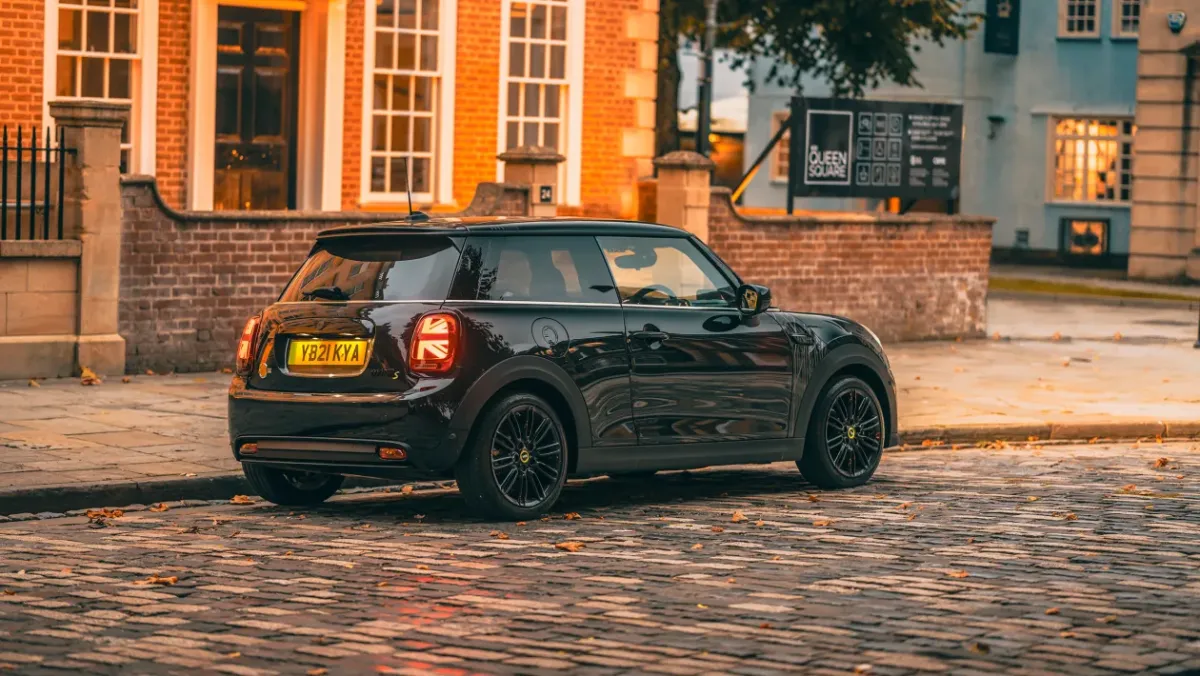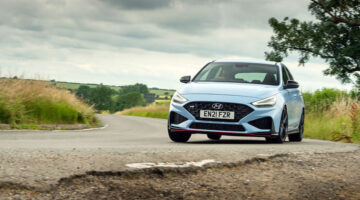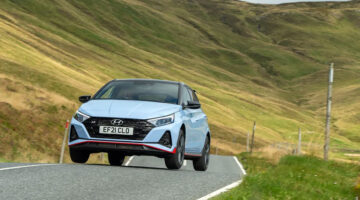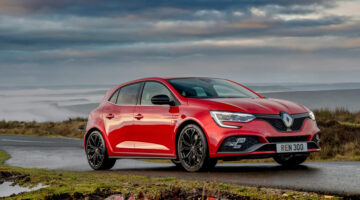Accomplished, but not entertaining, Mini’s core model now feels old and a bit awkward. The next-gen car can’t come quickly enough
PRICE: From $23,000 (Cooper Classic)
| Well built | |
| Inherently flawed ergonomics, dull powertrains, over-synthesised chassis dynamics |
The third new era Mini arrived on the scene back in 2013, and in the more than eight years since its introduction it has been pushed, pulled and prodded into every mould you could think of. Yet, at a point when we’d be expecting an all-new derivative, the onset of electrification has meant the current generation will need to live on for a few more years yet, with most of the effort towards the next-generation car being diverted to a new and completely distinctive all-electric interpretation coming later this year.
For now, this ‘F55’ generation has been given its third major update, encompassing styling and trim changes, and that’s about it. The range of bodystyles also remains, made up of the core three-door hatch, awkward five-door hatch, Convertible and Clubman quasi-estate. Within all of these body types are four engine variants: two three-cylinders and two takes on BMW’s B48 turbocharged four-cylinder petrol. There’s also the Mini Electric, which is only available with the three-door hatchback body, albeit modified to integrate the battery and electric motor’s packaging requirements.
As is typically the case with this F-generation Mini, most of its underpinnings are directly borrowed from BMW, sharing key elements of its technical makeup with the front-wheel drive 1 series and X1 crossover. This decision was made to help spread costs and include high-specification technology, but in the process relegated the mechanically sophisticated, but expensive platform of the previous two generations of Mini to retirement.
As a result, no performance derivative of this generation of Mini has yet struck a chord with us in the evo office, including the 302bhp JCW GP3 which promised so much after its two brilliant predecessors. For now, the basic JCW model with a 228bhp variant of the same turbocharged four-cylinder petrol is as tasty as hot Minis get, which is a shame for both us and the wider hot hatchback establishment.
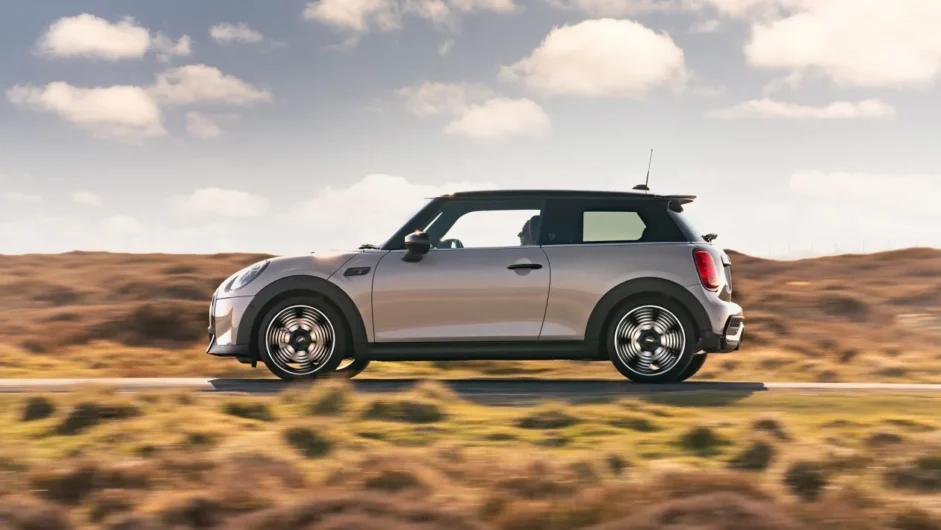
Prices, specs and rivals
Prices start at $21,010 for the basic Mini One Classic hatch, opening up the range with a naturally aspirated 1.5-litre three-cylinder engine with 101bhp and 140lb ft of torque. Standard equipment has been improved over the previous model, with those distinctive LED lights at the front and rear now standard. Mini now also fits a 6.5-inch colour screen across the range, replacing the previous car’s old dot-matrix offering.
Next step up is the standard Mini Cooper, adding a turbocharger to the three-cylinder engine for a more lively 134bhp and 162lb ft. At $22,700, the Cooper’s pricing puts it at around the same as an equivalent Audi A1, but thanks to its recent upgrade in standard equipment, has the edge in value terms. Look outside the premium sector and the Mini’s pricing also looks favourable next to cars such as the Suzuki Swift Sport hybrid.
Above this you’ll find the Cooper S at $26,805 that compares favourably to rivals such as the Ford Fiesta ST which now starts at $32,105 – its inflated price refers to its sole trim option, which in the top-spec ST-3 with five-door-only body. The wonderful Hyundai i20 N is a bit closer at $30,480, but is fully specced at that price, and is on another level in terms of engagement. The Cooper S Works starts at $33,335 and occupies a sort of no man’s land between traditional superminis and more powerful and more expensive rivals from both mainstream and premium competitors.
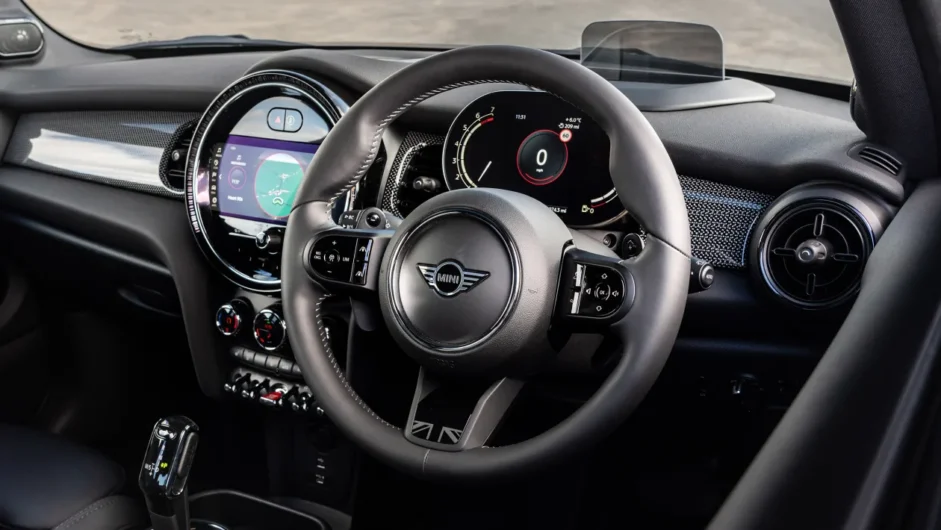
Audi’s A1 range has been reduced to occupy the lower end of things, with 94bhp, 108bhp and 148bhp powertrain variants spread between four trim levels costing from $24,450 and rising to $34,390. If you ask us, we’d rather walk than put up with a 94bhp A1.
Five-door Minis are available in all the same trim levels for a $850 premium, with the Convertible an additional $5700 over the hard-top three-door, although it does drop its entry-level ‘One’ trim, making it $26,685 at its least expensive. On all trims up to JCW are two optional additional Sport and Exclusive specifications. Sport mimics the JCW’s sportier appearance and equipment list, while Exclusive models pack in leather interior trim, 18-inch alloy wheels and other luxury upgrades – both option packages cost an additional $3600.
The Mini Electric is available in three trim levels distinct from its ICE-powered cousins, and cost between $34,405 and $41,645. Visually there’s little to tell between the two of them aside from some subtle acid yellow detailing. However, look closer and you’ll notice the taller sills and reprofiled wheelarch cladding.
Personalisation has been a key element of the Mini purchasing experience down the years and things are no different now. The Mini is available in a wide range of body and roof colour options, plus there’s extra stripes, coloured mirror caps, varying interior trim and a multitude of wheel designs up to 18 inches. New for 2022 is a colour-fade roof option, a process that no doubt looks great in the brochure, but almost certainly has caused a few headaches at the Oxford Mini plant to execute.
Engine, gearbox and technical specs
Both the three- and five-door models share the same engine and gearbox choices, but all are front-wheel drive, driven through either a six-speed manual or one of two automatic transmissions. The manual is preferable, its shift quick and pleasingly accurate, while Mini’s pedal spacing is such that heel-and-toe accelerator-blipped downshifts are easy to master. Cooper models utilise a seven-speed dual-clutch, and it’s swift enough, even if it’s prone to the odd bout of confusion, though you can always take over via wheel-mounted paddles if you want to get more involved. If the manual isn’t your thing, the Cooper S is available with the dual-clutch. Meanwhile, the full-house JCW gets the manual ’box, or an Aisin-sourced torque-converter on account of its higher torque figure.
The new Mini One utilises the same 1.5-litre three-cylinder engine as the rest of the range, replacing the previous 1.2-litre PSA-derived unit used in pre-2019 models. Despite the rise in capacity, the new engine’s lack of a turbocharger does soften mid-range performance slightly, not that the previous Mini One was a particularly high-performance model anyway. The Cooper’s three-cylinder is a more effective unit, but works best in the mid range, as so many modern petrols do.
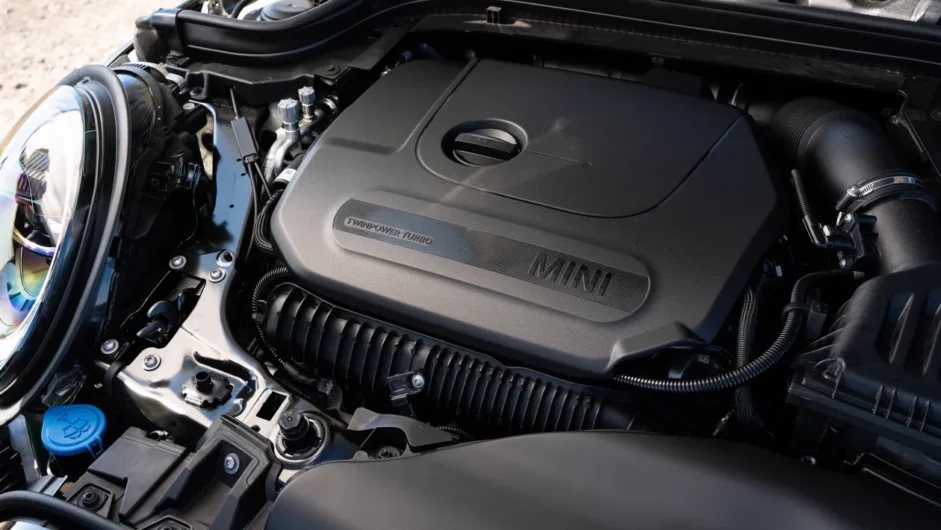
This is not a power plant that relishes revs, a fact compounded by the Cooper’s impressive refinement, but still allows decent enough progress when hustled. Vibrations are impressively suppressed, and the standard six-speed manual transmission is quick and accurate, even if the throw is a little long.
The four-cylinder in the Cooper S is substantially more powerful, producing 176bhp with 206lb ft of torque. In this application, the Mini’s thick spread of torque makes light work of the 1235kg weight figure, although again, the engine’s lack of top-end pizazz means the Cooper S is no longer the standout supermini hot hatch it used to be. The JCW builds on this with its subtle power increase, but at this tune starts making those front tyres need to work for their supper.
The Mini Electric’s 181bhp looks great on paper, and its instant torque does actually make it feel the most frisky model in the range, but it does lose out to both the Cooper S and JCW when up and running on account of its extra weight.
Performance and 0-100kph time
With the standard Mini One’s move to a new 1.5-litre three-cylinder engine, the new Mini has now totally transferred across to BMW’s modular engine range. The 1.5 is hardly brisk, taking 10.1sec to get to 100kph, but it’s fast enough in town to keep up with traffic, and impressively refined.
Next up is the Cooper, using the same 1.5-litre engine, but adding a turbocharger to the package, lifting power to 134bhp, while torque is up, to 162lb ft. The turbo is felt most in the mid-range, reducing the 0-100kph time to 7.9sec. For some of the
Quicker still is the Cooper S. With a manual transmission, the three-door version dashes to 100kph in 6.7sec and tops out at 235kph. The John Cooper Works is even quicker, covering the same metric in 6.1sec. Top speed for the Works is 246kph – more than enough for most, we suspect. It’s just a shame neither model sounds particularly joyful in getting there. The engine is fairly smooth, but the artificial ‘parp’ it emits isn’t particularly sonorous and there’s little encouragement to push it to the red line. These times are all fitted with the quick-shifting automatic transmissions; manuals have a 0.2sec disadvantage there or thereabouts.
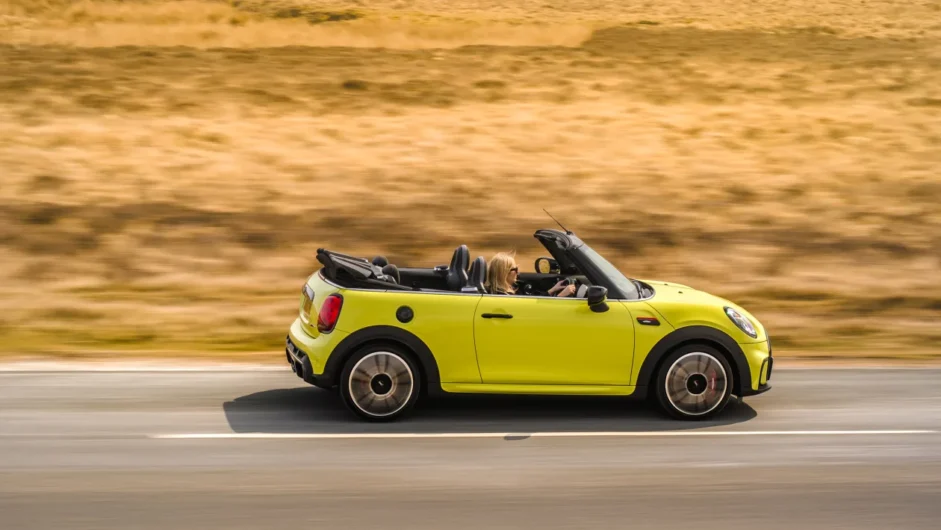
Adding a pair of doors inevitably dampens things a bit, but it’s marginal, the five-door One adding around 0.3sec to the 0-100kph time. The Coopers, whether petrol or diesel, add between 0.2 and 0.3sec to their sprint times, and the Cooper S a single tenth, but the reality is you’ll be hard-pushed to notice on the road. The Coopers top out at 209kph, though all will manage over 160kph, with varying degrees of enthusiasm.
The Mini Electric’s initial getaway advantage on account of its torque is more than evened out after 65kph or so, making its 7.3sec 0-100kph time good, but not great, considering its size. It is ahead of most key rivals, though, with Honda’s clever (and brilliant) e and Fiat’s new 500 Electric both losing out to the Mini in acceleration, both on paper and by the seat of your pants.
Ride and handling
When the first BMW-engineered R53 Mini hatch was launched in 2001 its nostalgic styling and clever detailing might have made it a hit on the sales charts, but its superb handling characteristics also proved BMW hadn’t cut corners on its first-ever front-wheel hatchback.
The bespoke platform was a great one, with a low centre of gravity and square stance on the road complemented by the unusual application (for a supermini) of multi-link rear suspension. As a result, the Mini had real talent on the road, with a snappy front end and sure-footed handling that always seemed to grip no matter the circumstance. The next-generation Mini, revealed in 2007, was built on this same platform, improving ride quality and refinement along the way. Both, in short, felt like proper ‘Minis’, even if they were significantly larger than the classics from which their name was derived.
Unfortunately, with BMW wanting to spread the development costs of the Mini’s front-wheel-drive platform, the third-generation F55 moved over to a larger modular chassis shared with BMW’s 1-series, 2-series Active Tourer and X1 crossover, changing not only the way the new model looked, but also softening its driving experience along with it. It’s still well sorted in that precise BMW way, but the pointed aggression and stance that defined previous generations had gone, leaving a far less interesting proposition in its wake.
Over time, it’s a feeling that’s only been compounded, something made worse by its very odd ergonomics. The seating position does allow you to get relatively low in the chassis – a nice change from most supermini rivals – but the towering dash makes it feel like you’re standing at a rock face, or make that a climbing wall at a county fete with all those distracting LED lighting elements. More of a fundamental issue is the relationship between the steering wheel and gearstick, making the whole process of driving quickly a fumbling mess.
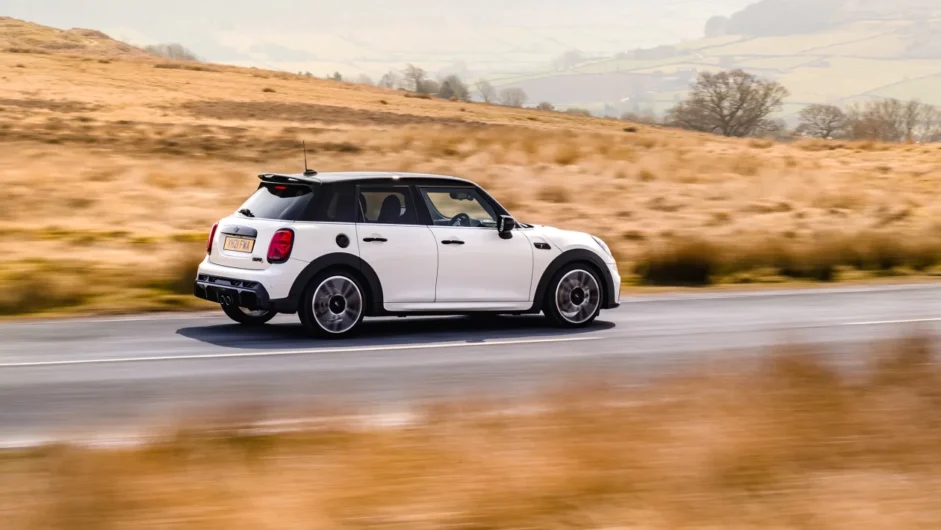
The flip side of this frustrating pivot has been a big jump in refinement, something that in reality appeals to most buyers.The steering, although sharp, doesn’t communicate much information about the road surface, nor how much the front tyres have to give. The ride quality is well judged, and even over rough surfaces maintains composure whilst never deteriorating to the point of discomfort. There is no doubt that the Mini still just about holds on to its dynamic edge over its more pedestrian rivals, but the distinction between settled premium hatch and basic hatch seems to be thinner than ever.
Push further up the range and the John Cooper Works models increase roll stiffness, but the sophisticated damping rarely feels out of step, even if overall ride quality becomes a little more compromised. Body control, as a result, is improved, while any sign of traction deterioration is made up for by the stickier tyre compound.
The Mini Electric on the other hand is probably the best of the bunch around corners, as while there’s more weight to deal with (around 240kg more compared to the Cooper S) it’s fixed down low in the chassis, helping mimic that typical ‘Mini’ feeling that’s more about precision than over-the-limit fun. Unfortunately, the trade-off is the seating position, which is slightly higher than in the standard car, and therefore erodes some of this new-found zest.
L/100km and running costs
Given the Mini was originally conceived as a solution for an oil crisis, the current car really should be a frugal proposition. It proves so, too, as all feature stop-start to cut out any unnecessary idling when stood still. Mini benefits from all of BMW’s EfficientDynamics technology and turbocharging expertise. The result is a choice of cars that avoid the pumps commendably.
No surprises that the Cooper D is the economy champion, achieving a highly impressive 3.9 L/100km on the old NEDC cycle, that backed with an emissions figure of just 102g/km.
Don’t rule out the petrol models on economy grounds, either, as the
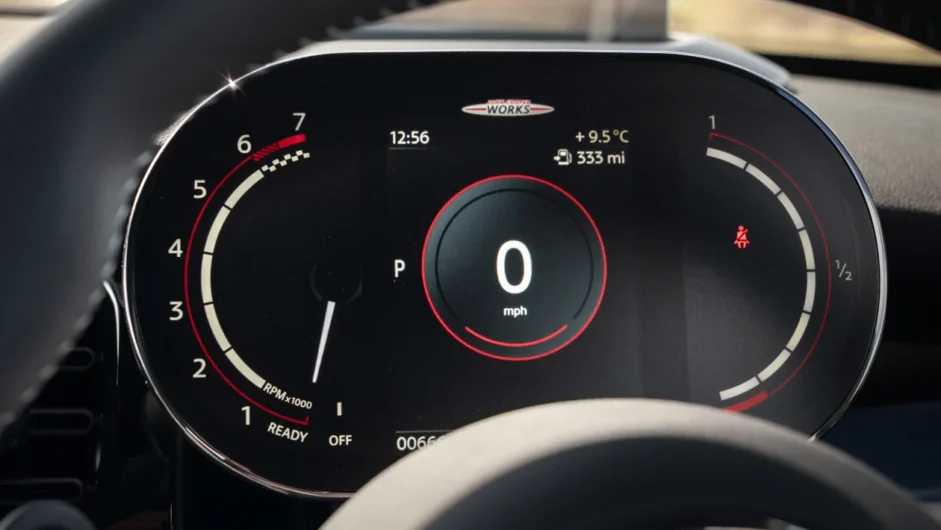
Mini pioneered fixed-price servicing packages and the TLC pack remains a popular and cost-efficient way of running the Mini, with five years or 80,000 kilometres of
Interior and tech
If there was an analogy to best describe the inside of the current generation Mini it would probably have something to do with an acid trip and a bubble machine. Now more than ever, this third-gen Mini’s interior is a hot mess of circle motifs, flashing lights and Duplo-like plastic buttons and switches. Inherent build quality is fine, better than most mainstream rivals in fact, but now feels every bit of its eight years, especially given it was little more than a riff of the dash from the previous-gen car, which wasn’t far removed from that 2001 original if we’re being fair.
Compared to cars such as the Honda e or new Fiat 500 Electric it feels ancient – something that’s amplified by the off ergonomics and upright windscreen that, thanks to the BMW platform, sits way out in front of the driver. The tech isn’t inherently flawed, but it is a few generations behind BMW’s latest systems and isn’t as user-friendly given it’s accessed through an awkwardly shaped display and difficult-to-access rotary controller. The 2021 update brought with it a new half-digital, half-analogue (despite appearances) driver information display. It works better than before, and is a big improvement on the horrible analogue dial pack that was there before, but it still feels like a solid afterthought.
An olive branch we can extend to the Mini’s interior is in its comparison to that of its key rival, the Audi A1. Unlike the first-generation car – which set a new standard in interior design at this price point – the current A1’s cabin feels as plush as an underground station in Berlin, with horrible plastics, a lazy, unrefined design and general awfulness.
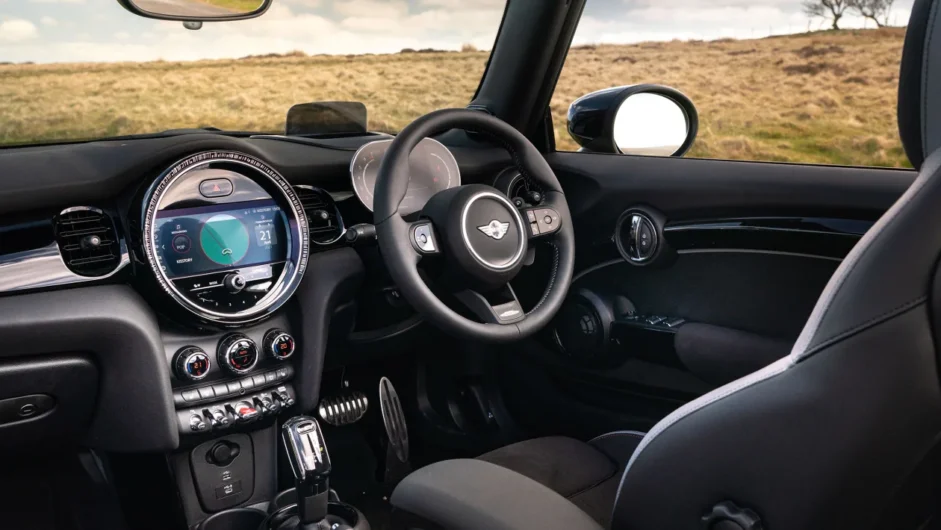
Space in the Mini has also been improved dramatically over previous models, although the three-door is still only really a four-seater. Rear-seat and boot space are better, while storage in front is greater, also. The bluff, upright windscreen still informs the short dashboard and means forward visibility is pretty good, the A-pillars being of minimal hindrance to your view out, but overall the Mini feels like a much larger car inside than its predecessors.
Design
Like the interior, which appears to take all of the 20-year-old motifs of the original Mini and reprocesses them into a retro-pastiche plastic salad, the exterior does exactly the same thing. The underlying issue with the F55-generation Mini is its proportions, defined by the tall beltline and big front overhang – fundamentally undermining the entire design.
The original R50/R53 – penned by none other than Frank Stephenson – took the unique proportions and made a whole new generation of retro design elements work to them precisely. Its upright headlights and clamshell bonnet worked with the tiny front overhang. In fact, it defined it. But by moving components to the wrong side of the axle line (new crash-safety regulations, can’t ignore those), Mini’s designers inadvertently created something that looked more like a Chinese rip-off.
To try to offset this dramatic change in proportion, they applied a large amount of curve at the front of the car, pulling the ends of the headlights and front intakes as far back as possible to try to hide the bulky front end. Most of these design details have also been applied on a much larger scale, making it look gawky. Meanwhile, the rear lights have grown in size compared to those of previous models, and still include the cringeworthy Union Jack graphics introduced in 2019.
Recent changes have, to some eyes, improved the overall design, with a smoother and more contemporary look that does a little bit to clean things up, only to then backtrack on models with the JCW bodykit, which swap these for a blocky, messy collection of real and fake plastic mesh openings.
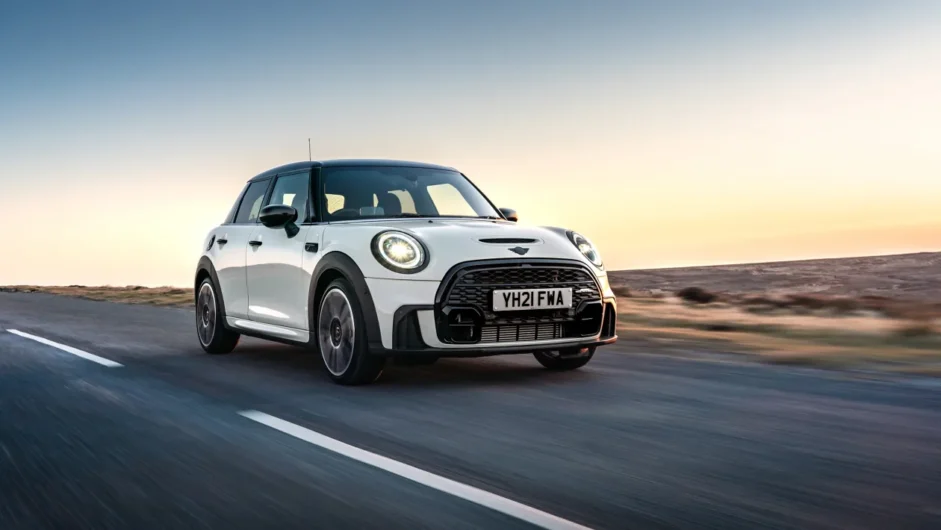
Made much worse is the five-door model, as Mini’s designers have not only given it a further rake on the rear screen to try to distinguish it from the Clubman estate, but also fitted framed doors in contrast to the three-door’s frameless units. This changes yet another key element of the Mini’s design – that clean glass-on-glass profiling along the glass house, and replaces it with a combination of plastics that are ill-fitting, overlapping and just broadly horrible.
Love it or loathe it, the new Mini definitely makes a statement, but with the new Honda e and Fiat 500 Electric treading new paths by reimagining retro design with a very successful contemporary flair, the Mini just looks old, clumsy and generally outclassed.
This article originally appeared at evo.co.uk
Copyright © evo UK, Dennis Publishing

